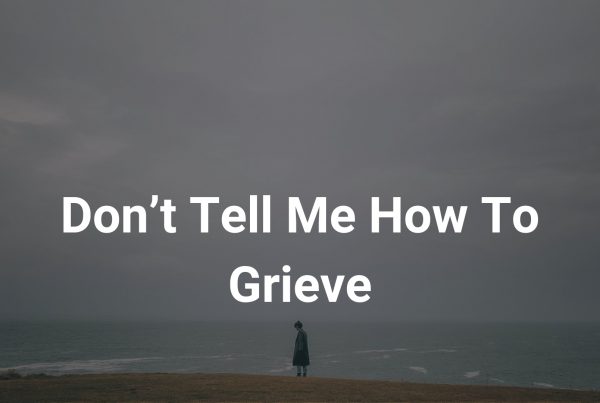Authors: Dr. Abbie Maroño
Published: December 12, 2024
“He’ll come back—they always do.” It’s a sentiment often shared among friends when discussing an ex-partner who has ended the relationship or suggested taking a break. The idea is expressed as a form of empowerment: “He knows how great I am, so when he leaves, he’ll realize he won’t find anyone better.” However, these yo-yo relationships and the belief that someone’s return equates to care are deeply problematic. And this isn’t just about men—the same dynamics can occur in any relationship, regardless of gender.
The issue with this mindset is that if someone consistently leaves you only to come back, they are not showing that they care; they are engaging in a pattern of emotional manipulation. Returning to a relationship after leaving, especially repeatedly, can create an unhealthy dynamic where one person is treated as an option—a safety net that the other knows they can return to when convenient.
Leaving And Returning
The pattern of leaving and returning, often referred to as “yo-yo” or “on-again, off-again” relationships, is a form of psychological manipulation with profound effects on the person left behind. This behavior is characterized by intermittent reinforcement—a concept well-documented in psychological literature. Intermittent reinforcement occurs when positive reinforcement is given unpredictably, making the recipient more likely to remain invested despite the relationship’s instability. The unpredictability of the partner’s return creates a sense of hope and anticipation, keeping the other partner emotionally hooked.
From a manipulative standpoint, this cycle allows the leaving partner to maintain control over the relationship. By withdrawing and then returning, the leaving partner often instills doubt and insecurity in their partner, making them more dependent and desperate for validation. This manipulation is subtle yet powerful, exploiting the emotional vulnerabilities of the person being left behind. The uncertainty and emotional turmoil caused by this cycle can weaken the individual’s ability to recognize the unhealthy dynamics at play, leading them to rationalize the behavior as a sign of the partner’s eventual commitment.
Individuals with insecure attachment styles, particularly those with anxious-preoccupied attachment, are especially susceptible to this kind of manipulation. They may interpret the partner’s return as a sign of love or commitment, reinforcing their belief that the relationship is worth saving. However, this repeated behavior only serves to deepen their anxiety and insecurity, as they are never truly assured of their partner’s stability or commitment.
Treated Like An Option
The effects on the person consistently treated as an option in this cycle are profound and damaging. Emotionally, being subjected to a pattern of leaving and returning can lead to feelings of worthlessness, low self-esteem, and chronic anxiety. The person may begin to internalize that they are only valuable when their partner chooses to return, eroding their sense of self-worth over time. This can create a vicious cycle where the individual becomes increasingly dependent on their partner for validation, making breaking free from the relationship even harder.
The psychological toll of being treated as an option can also manifest in other areas of life. Chronic stress, caused by the instability of the relationship, can impair cognitive functions such as memory, attention, and decision-making. The constant emotional rollercoaster may lead to difficulties in concentrating at work, maintaining other relationships, or engaging in self-care. Over time, this can contribute to more serious mental health issues such as depression and anxiety disorders.
In addition to the psychological effects, there can also be physical consequences. Chronic stress weakens the immune system, leading to increased susceptibility to illnesses. It can also disrupt sleep patterns, further exacerbating mental and physical health issues. In severe cases, the stress and emotional turmoil caused by being treated as an option can lead to psychosomatic symptoms, such as headaches, digestive issues, and chronic pain.
Moreover, the individual may develop a distorted view of what a healthy relationship looks like. They might believe that love inherently involves pain, uncertainty, and the need to fight for their partner’s attention. This distorted belief system can lead them to tolerate or even seek out similar dynamics in future relationships, perpetuating a cycle of unhealthy attachments and emotional manipulation.
What does healthy look like?
In stark contrast to the unpredictable pattern of leaving and returning, a healthy relationship provides a secure foundation where both partners feel valued and understood. In a healthy relationship, both partners are consistent in their behavior, emotions, and commitment. They show up for each other regularly, creating a sense of security in the relationship. This consistency builds trust, which is a cornerstone of any healthy relationship. When both partners know they can rely on each other, it creates a stable environment where both individuals can grow together.
Leaving and returning signals a lack of commitment and investment in the relationship. It suggests that one partner is not fully dedicated to working through issues and is instead willing to step away when things get tough. In a healthy relationship, both partners are committed to the long-term success of the relationship, working through conflicts rather than abandoning the relationship at the first sign of trouble.
Furthermore, emotional safety is crucial for vulnerability and deep connection. When one partner repeatedly leaves and returns, it creates an environment of emotional uncertainty, where the other partner may feel insecure and hesitant to fully open up. In contrast, a healthy relationship provides a safe space for both partners to be vulnerable without fear of abandonment. This emotional safety fosters deeper intimacy and connection.
True care and respect in a relationship are demonstrated through consistent presence, clear communication, and mutual respect—not by someone’s ability to walk away and return at will. If you find yourself stuck in this cycle, waiting for someone to validate you, know that you deserve the emotional stability and respect of a healthy relationship. Breaking free from the toxic pattern of leaving and returning is the first step toward finding a relationship where you are valued, respected, and truly loved.





